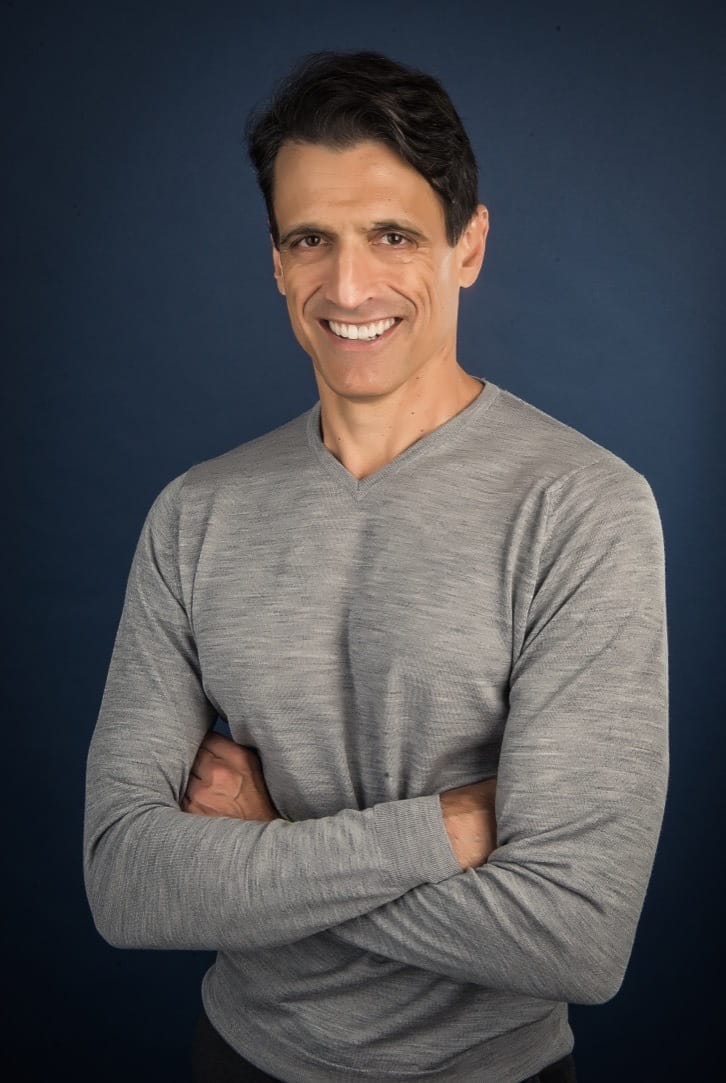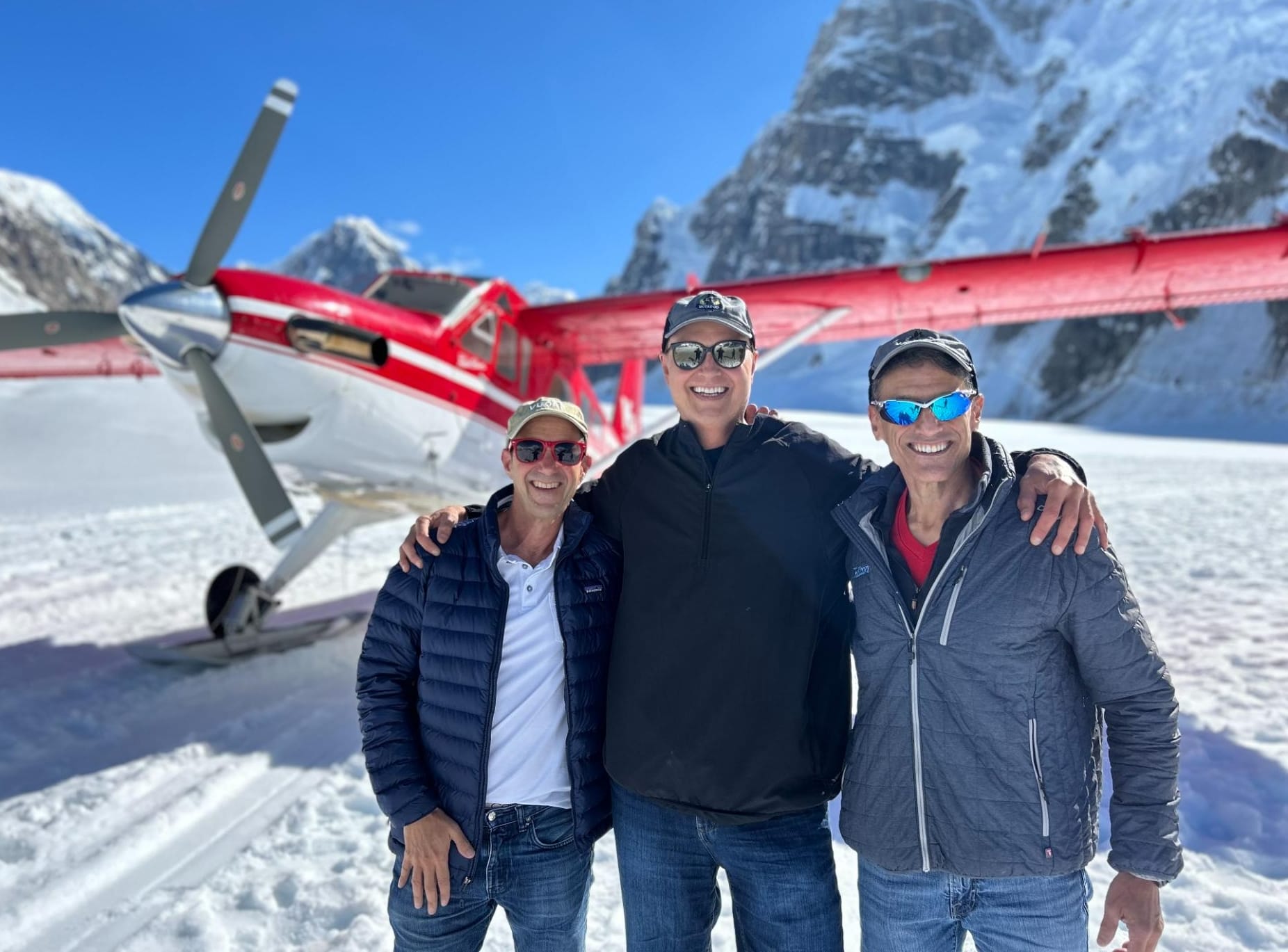Alaska’s “Last Great Race” may be more than half a century old, but CEO Rob Urbach WG91 still sees the Iditarod as more of a young venture than an incumbent operation. “We’re a 52-year-old startup, because we’re still in race mode all the time,” says Urbach, who joined the Iditarod in 2019 and previously headed USA Triathlon.
The race — kicking off this year on March 2 — spans more than 1,000 miles of snow, ice, and frigid temperatures from its start in Anchorage to its finish in Nome. As with any year, the lead-up to the event has required planning from all angles, including supply deliveries, rest stops, and rescue preparedness. But that’s only one aspect of the organization, which these days is also journeying into other areas of the extreme sporting world, including betting and a channel with year-round dog competition, entertainment, and thought-leadership content. Wharton Magazine caught up with Urbach ahead of the race to talk about those efforts and the wild yet rewarding annual ride at the heart of the Iditarod.
Wharton Magazine: The Iditarod may be one of the best-known races on the planet, but given its extreme nature, many people don’t get the chance to see it up close. What’s something you think most people don’t know about it?
Rob Urbach: Well, first off, there’s an opportunity to get a very immersive experience through our 24-hour livestream. It’s a very complicated production: We’re getting the signal off the ground, where there’s no power, let alone internet. We essentially put in our own satellite system and have planes, snow machines, and multiple drone pilots capturing the race. This year, we’re innovating: We’re going to have the opportunity for you as the viewer to choose your camera feed from a handful that are running live at the same time. So you can actually watch the Iditarod up close and personal from the comfort of your couch while we’re out there battling 40-mile-an-hour winds and minus-30-degree temps and still trying to keep a signal up and running.
It’s a unique, dynamic event that’s as old-school as you can be, yet we try to be innovative and provide top-line experiences to help you get your Iditarod on at home. There are also a lot of analytics that we put forth as part of our livestream subscription broadcast.
WM: I’m very curious about that, since analytics is becoming so pervasive across sports in general. How have you innovated with analytics over the past few years?
RU: The rules of the race are a little complicated, because there are mandatory rest stops along the way. Someone can be in the lead on the leaderboard but not have taken rests yet. With analytics, you can see miles per hour and when teams are resting and calculate who’s really in the lead, even though that may not be represented by what you’re seeing on the trail. There’s a lot of dynamic strategy, and you can glean some of that through our GPS tracker. In addition to the cameras, you can track progress on a digitized trail map. You can see elevation on it, too — who’s handling hills or who’s on the downhill.
Our teams are also trying to think through their strategy with analytics, looking at everything from who’s rested to what their average pace is to how many dogs they have running. Each team starts with 16 dogs, but many of them aren’t trained to go the full way or could be resting or moved around the line on the team.
WM: In addition to feeds and analytics, how else have you evolved the race since becoming CEO?

Rob Urbach WG91
RU: This year, we’re launching a gaming space called Trifecta. It’s a betting game to predict the winner, their finishing time, and the number of dogs they finish with. It’s a pilot program that we’re launching this year and looking to extend.
We’re also launching IditaHealth, which is essentially tapping the celebrity value of mushers and our cultural relevance to inspire and incentivize communities in Alaska to get healthier by addressing substance misuse, poor nutrition, inactivity, and other health issues. We’re creating a public good with these kinds of programs and also have one for reading, called IditaRead. Alaska is woefully behind in children’s literacy rates. We’re moving the meter with our program, in which kids read their way along a gamification of the trail and get rewarded.
WM: What are some of the greatest challenges you’ve tackled in the role?
RU: One of the things I realized was that we needed to diversify our revenue streams. Iditarod is a nonprofit, and we’ve set up a for-profit affiliate called Dogz. Think of Dogz as a platform company in the multi-billion dollar dog industry: Our business model consists of content (think the Netflix for all things dogs), events, products, and services. Since I joined Iditarod, Dogz acquired DockDogs, which hosts 120 events across the country where dogs jump off docks into pools for height, distance, and speed.
We plan to grow Dogz over the next three to five years. Iditarod has a minority share that ultimately creates a liquidity event for investors and — for the Iditarod — an endowment. We have a network of veterinarians, over 40,000 dogs that compete in our events, and a fan base in the millions; we are well-positioned to be a thought leader in the space.
WM: What’s one of the most surprising or unexpected things you’ve learned on the job?
You can make all kinds of plans, but it’s really hard to contemplate the chaos that’s going to happen when weather changes or is projected wrong. I’ve learned a lot about aviation, because we fly almost 800 flights. Planes have gone down in soft snow and gotten stuck, leaving pilots and supplies stuck somewhere. You have to get out there then by snow machine, which could take a day. Wind also piles up snow, which can make it hard to get supplies somewhere. I’ve learned a lot about managing a complex supply chain.
The race also runs across the Norton Sound, where the racers are literally on sea ice. Big storms blow ocean water on top of the ice, and that’s treacherous. My first year, three mushers got stuck and had to be rescued by Black Hawk helicopter.
WM: What about the most rewarding experience?
RU: I think our ability to navigate through COVID. It was extraordinarily challenging. We were able to get through the race in 2020, and in 2021, there were still no major events happening at our level. We ended up actually having our healthiest year ever, because we were so hygienic, with no shared meals, new sleeping protocol, ventilation, and masking. The goal was no transmission, and we did that with cooperation from a lot of people. And our Dogz platform is the second thing, because it creates an opportunity to future-proof the Iditarod and be a leader in that space.
WM: As a racer yourself, what initially drew you to the world of extreme sporting competitions?
RU: When I was in high school, I read an article on the Ironman Triathlon. It resonated with me deeply, and I ended up doing the race in college. I came back about 30 years later to do it again and did about 80 triathlons in between.
But the Iditarod is on a whole other level. After a triathlon, you can count on a hot shower. With the Iditarod, the teams have to feed themselves and their dogs. There’s support at checkpoints — and yes, there’s hot water there — but they pretty much have to cook their own food. It’s even hard to eat protein bars. You can’t really get them down at minus-30 degrees. So they carry a cooker in their sleds, but you don’t want any extra weight. All those things resonate with me from a standpoint of peak performance, overcoming challenges, and accomplishment.

























